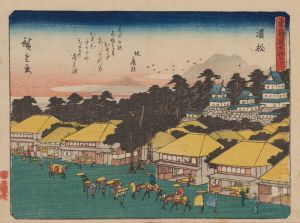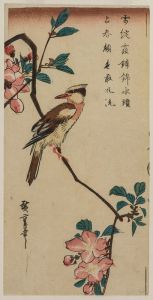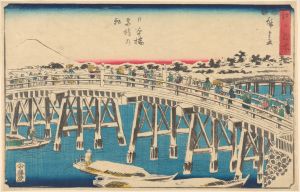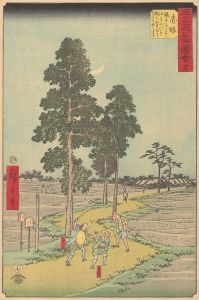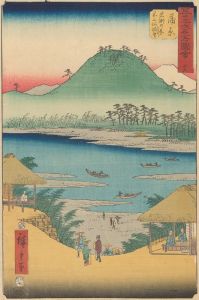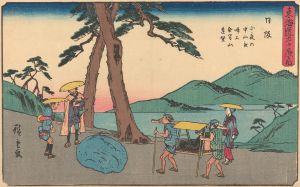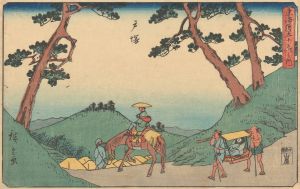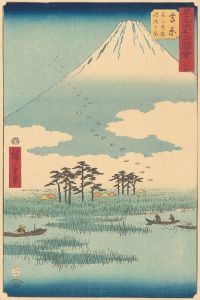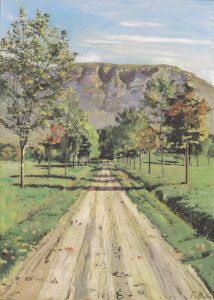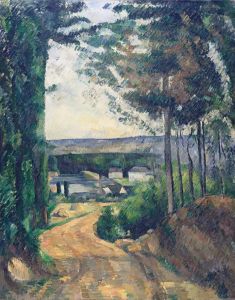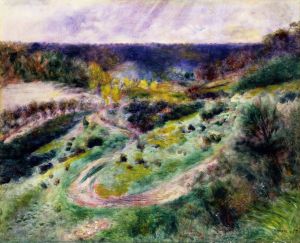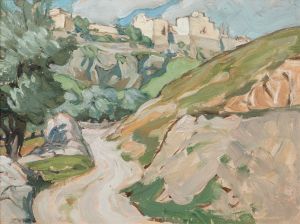
Tokaido gojusantsugi, Pl.31
A hand-painted replica of Andō Hiroshige’s masterpiece Tokaido gojusantsugi, Pl.31, meticulously crafted by professional artists to capture the true essence of the original. Each piece is created with museum-quality canvas and rare mineral pigments, carefully painted by experienced artists with delicate brushstrokes and rich, layered colors to perfectly recreate the texture of the original artwork. Unlike machine-printed reproductions, this hand-painted version brings the painting to life, infused with the artist’s emotions and skill in every stroke. Whether for personal collection or home decoration, it instantly elevates the artistic atmosphere of any space.
Andō Hiroshige's "Tokaido gojusantsugi, Pl.31" is a woodblock print from his renowned series The Fifty-three Stations of the Tōkaidō (Tōkaidō Gojūsan-tsugi no Uchi), created during the Edo period in Japan. This series, first published in the 1830s, is one of Hiroshige's most celebrated works and a cornerstone of the ukiyo-e genre. It depicts the 53 post stations along the Tōkaidō road, a major route connecting Edo (modern-day Tokyo) to Kyoto. Each print in the series captures a specific station, showcasing the landscapes, people, and activities associated with that location.
Plate 31 corresponds to the station of Arai, one of the post towns along the Tōkaidō. Arai was notable for its checkpoint (sekisho), which was used to monitor travelers and goods moving along the route. Hiroshige's depiction of Arai in this print is characteristic of his ability to blend natural scenery with human activity, offering a glimpse into the daily life and environment of Edo-period Japan. The composition typically includes elements such as travelers, local architecture, and the surrounding landscape, rendered with Hiroshige's distinctive use of perspective, color, and attention to detail.
Hiroshige's Tōkaidō series was produced using the traditional Japanese woodblock printing technique, which involved collaboration between the artist, carvers, and printers. Hiroshige would create the initial design, which was then carved into wooden blocks and printed onto paper using water-based inks. This method allowed for the vibrant colors and fine details that are hallmarks of ukiyo-e prints.
The Tōkaidō series gained immense popularity during Hiroshige's lifetime and has continued to be celebrated for its artistic and historical significance. It not only serves as a visual record of the Tōkaidō road but also reflects the cultural and social dynamics of the Edo period. Hiroshige's work influenced both Japanese art and Western artists, particularly during the Japonisme movement in the 19th century.
Specific details about the composition and elements of Plate 31 may vary depending on the edition or impression, as multiple versions of the series were produced. However, the print remains an important example of Hiroshige's mastery in capturing the essence of a place and moment in time.





